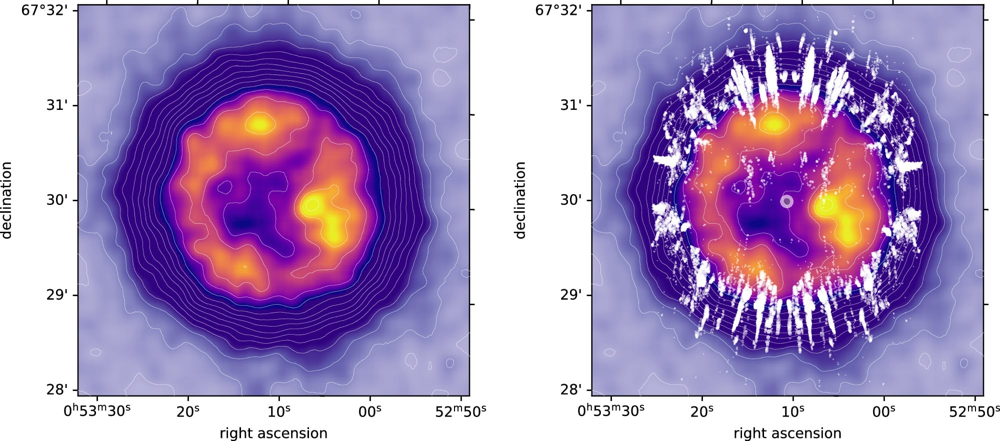Astronomers examined a supernova resembling a dandelion, as described in ancient chronicles.
Historical records from China and Japan from the year 1181 mention a "guest star" that suddenly appeared in the sky and remained visible for 185 nights. It was only many centuries later that astronomy advanced sufficiently to identify the remnant of this rare event still present in the sky.
In 2021, scientists discovered an unusual nebula, Pa 30, in the constellation Cassiopeia, located approximately seven and a half thousand light-years away from us, and concluded that this is indeed what ancient astronomers had written about.
Recently, a team of researchers from the United States and Austria confirmed this finding. In their article in The Astrophysical Journal Letters, they reported that the expansion of the nebula is still ongoing, at a constant speed of about 1000 kilometers per second. Currently, it reaches a diameter of about three light-years. This allowed them to easily calculate the moment when this expansion must have begun, leading to results that align with the end of the 12th century. But what exactly happened then?
To investigate this, astronomers analyzed observation data using the Keck Observatory in Hawaii and created a three-dimensional model of the peculiar structure of Pa 30, featuring "threads" of material radiating outward in all directions. They found that these "threads" are asymmetric. According to the researchers, the material was ejected unevenly. Within the nebula, they even observed a relatively large cavity. All of this adds to the picture of a rare cosmic event—a supernova explosion of a particular type.
The most common, "standard" case of a supernova occurs when a massive star sheds its inflated outer shell after it runs out of fuel for nuclear reactions. These reactions take place in the cores of stars and counteract the gravitational force that constantly seeks to compress the material. When these reactions cease, nothing can hold back the force of gravity, and the core collapses.

However, there are other supernova scenarios, where the explosion occurs not from the shedding of the stellar mantle but from the explosion of the core. This happens with white dwarfs, which are the remnants of low-mass stars, like the Sun. Often, they are not alone but exist in binary or even triple systems. In such close relationships with a companion star, a white dwarf may begin to siphon material from it, eventually "consuming" too much and exploding.
The supernova of 1181 is considered to be such an interesting case, but with another important feature. Typically, when a white dwarf explodes, nothing remains of it, but in the nebula Pa 30, a remnant of the deceased star is observed. Combined with the cavity and the uneven "threads," this "cosmic dandelion" leads astronomers to speculate that a merger of two white dwarfs occurred in the constellation Cassiopeia.